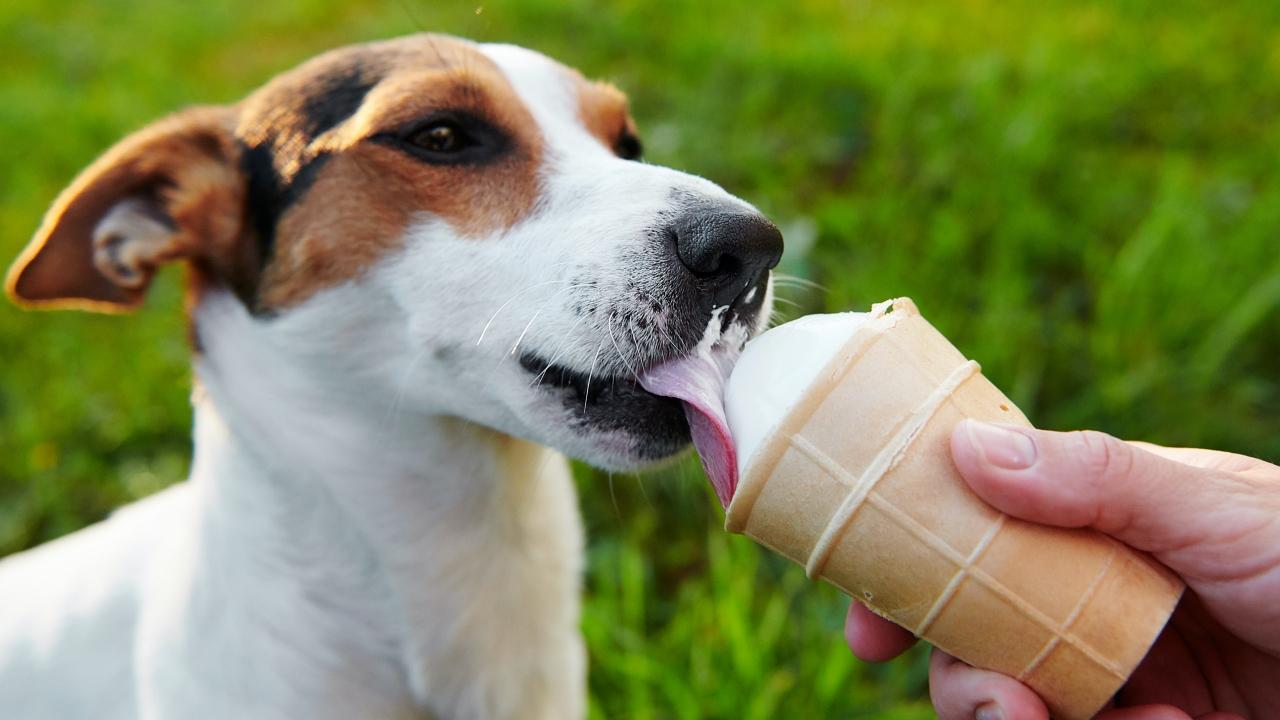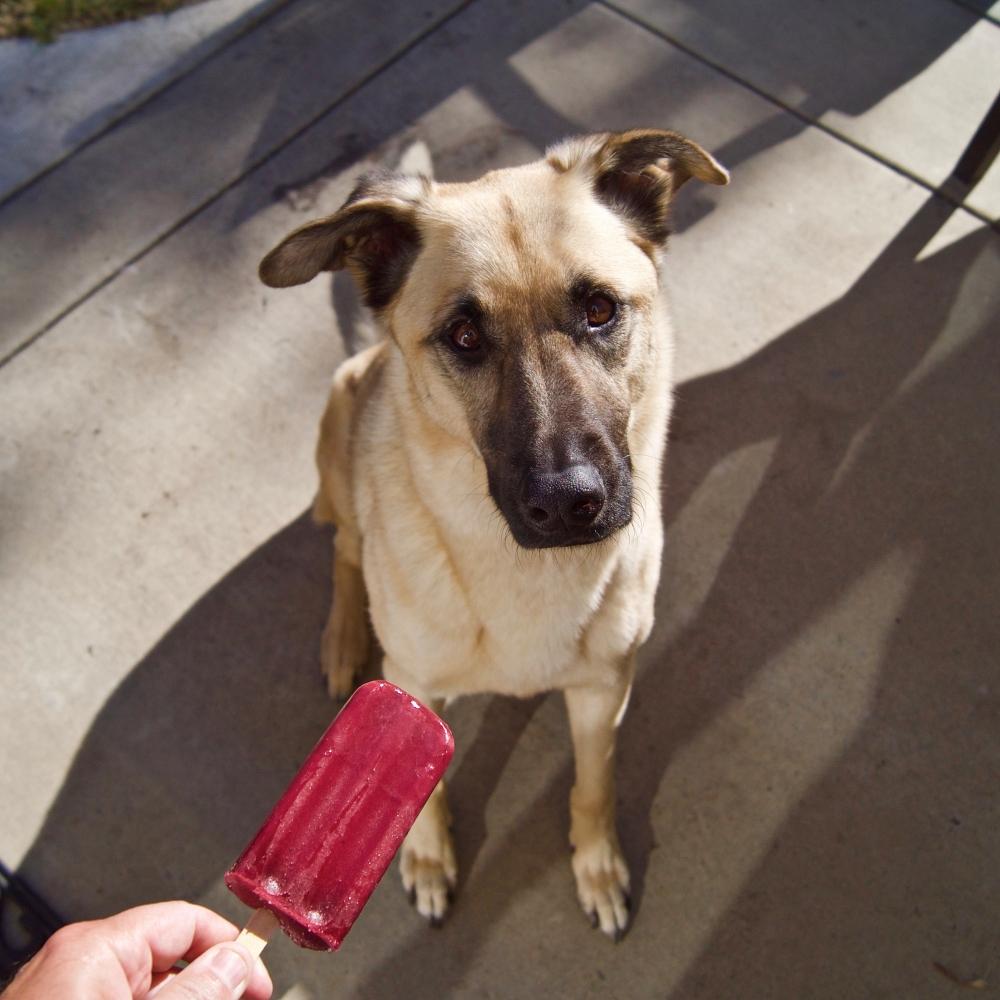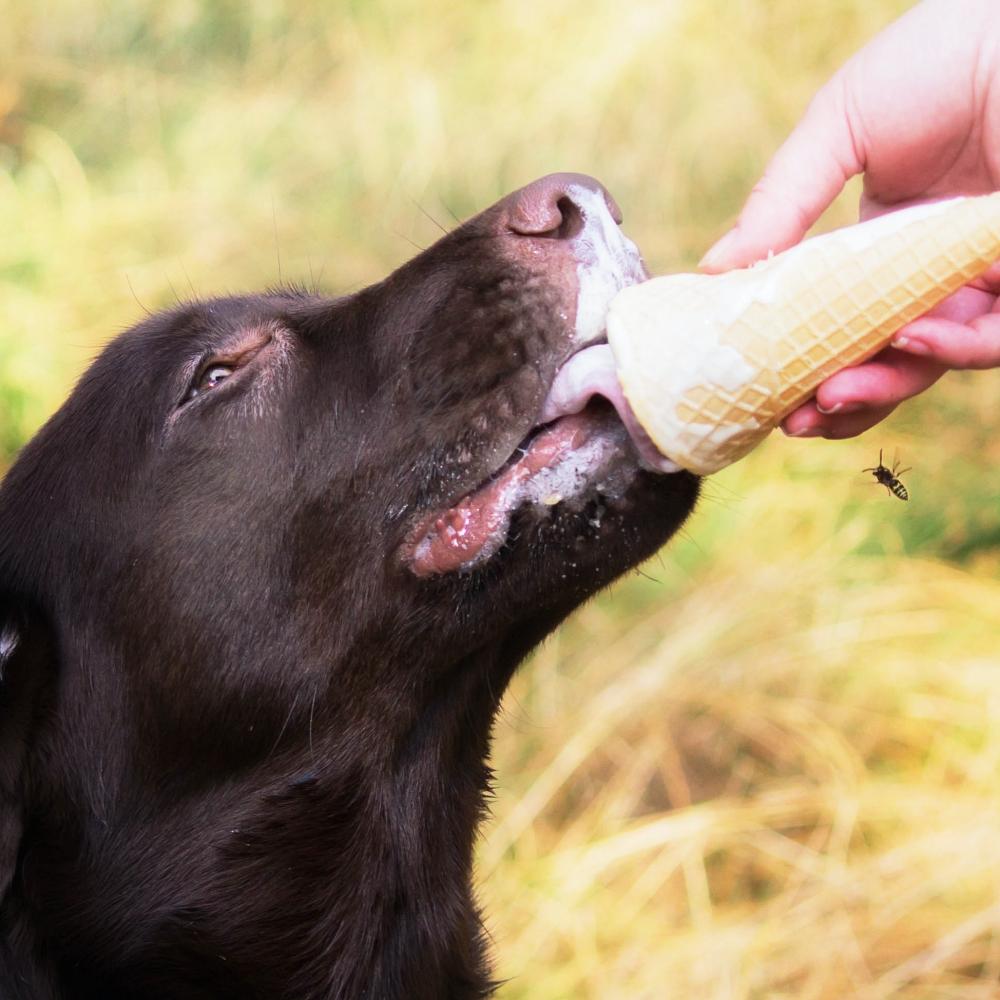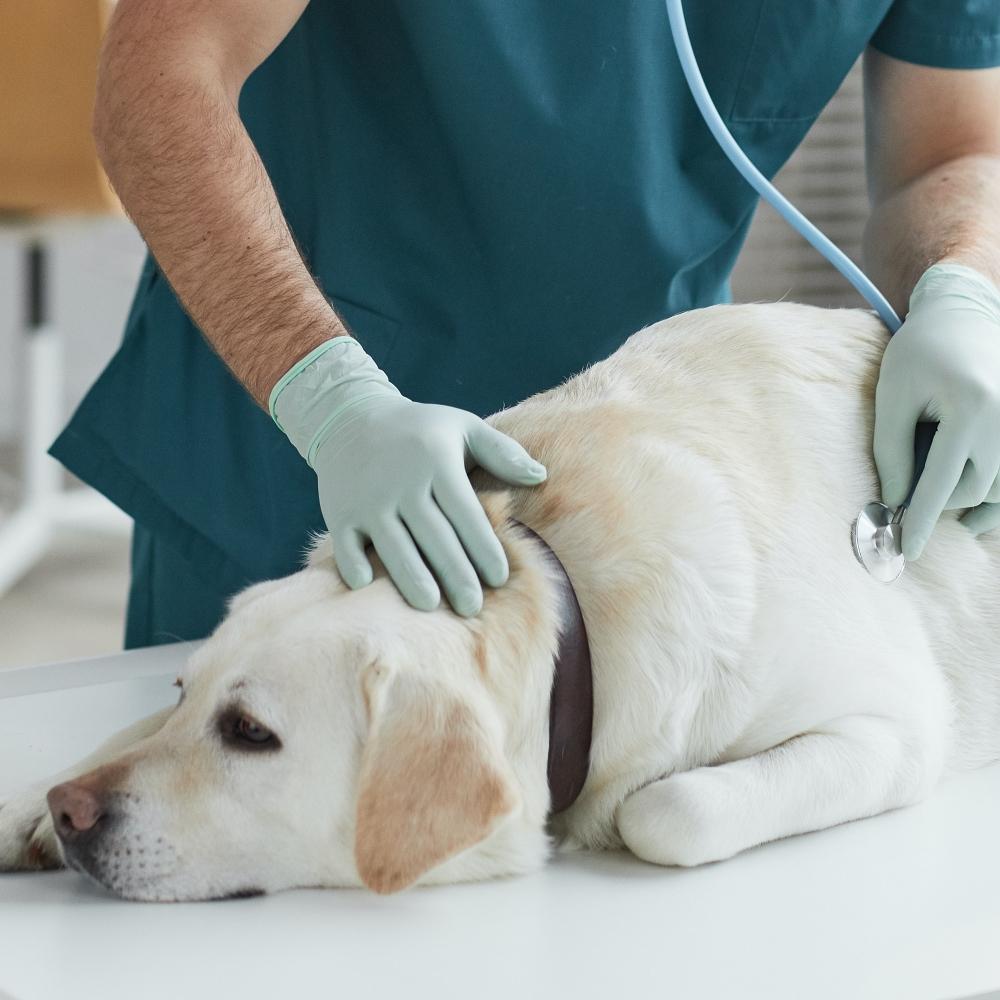Your Cart is Empty
Black Friday | 25% OFF & More!
Black Friday | 25% OFF & More!
Black Friday | 25% OFF & More!


Let’s face it, ice cream is a sweet treat enjoyed by many of us, particularly as the weather starts to heat up. As you chow down on a bowl of delicious ice cream and your dog looks at you with their big, soulful eyes expectantly, you may very well be tempted to give them a lick or two.
This article explores if dogs should eat ice cream, and all of the potential dangers associated with this frozen, dairy snack. We also take a look at some of the more toxic ice cream flavors, and discuss some safer alternatives for your furry friend.

Dogs can potentially eat some ice cream and get away with it, but it is not something you should be offering them or encouraging them to eat. So, is ice cream bad for dogs? We’d have to answer yes.
When a dog eats ice cream there is no way of predicting how they will react. Though some can tolerate it well, others may experience stomach upsets. Less commonly, a dog can become very unwell and may need to be admitted to the vet hospital.
There are actually quite a few reasons why ice cream is a bad food choice for dogs. Let’s take a closer look.
Most ice cream is made from milk and cream. The majority of dogs become lactose intolerant once they stop nursing from their mother. Signs of this can include:
Abdominal bloating
Diarrhea or stool which contains mucus
Gas or burping
Abdominal discomfort
Mild lethargy
Vomiting
A reduced appetite

Ice cream is high in both sugar and fat. Too much sugar over time can contribute to the development of conditions such as diabetes mellitus and often lead to a upset stomach. Treats with lots of fat are also a big no no. They can contribute to canine obesity and could even trigger bouts of life-threatening pancreatitis in some individuals.

Many popular ice cream varieties contain ingredients that are actually toxic to dogs. Some of the more common ones would include chocolate, macadamia nuts, raisins, coffee, alcohol, and xylitol (a sugar replacement).
For a small dog, just 10g of dark chocolate can be poisonous. Similarly, just a few raisins have the potential to cause acute kidney failure.
Unfortunately, ice cream is off the menu for puppies too. Puppies are less likely to tolerate new ingredients in their diet and are less good at coping with an upset stomach. Indeed, repeated episodes of vomiting and diarrhoea can quickly lead to dehydration and low blood sugar in these little guys.

There may come a time when your dog manages to lick a bit of your ice cream cone when your back is turned, or snaffles some out of your bowl on the table. Don’t panic, and follow the steps below.

The first thing you’ll want to do if your dog has ingested ice cream, is to check for any toxic ingredients. Most ice cream is not toxic, but if it contains things like raisins or xylitol your dog could really be in danger. If you can’t find the packaging, you’ll usually be able to get the ingredients from the product manufacturer, or the ice cream parlor where it was bought.
Monitor your pooch over the next 24 hours, in case of any signs such as vomiting or diarrhea. Should an upset stomach occur, this is usually something that can be managed from home with a bland diet and plenty of water.
You should call your vet immediately if the ice cream contains anything that could be toxic. They may suggest you come in so they can induce vomiting, if the toxic ingredient was ingested in worrying quantities.
If your dog ate ice cream and is then showing more severe symptoms- such as persistent vomiting, constant stretching, lethargy, and shivering- they may have developed an episode of acute pancreatitis. These dogs need to be seen at the local vet hospital urgently, and may require hospitalisation.

Realistically, you should not be giving your pet ice cream! There are none that are good for them, just some that are ‘less bad’. Lactose-free ice creams and those that are made from natural yoghurt tend to cause less stomach upset, but would not be a healthy snack for your dog, and could still lead to a dodgy tummy the next day.
Fruit flavors and vanilla are probably the least ‘bad’ of all the ice creams, but would still not be something your dog should be eating. Similarly, sorbets are generally tolerated quite well, but are not something we’d be aiming to feed with any frequency.
Now for the fun part! While ice cream made for humans is not something to share with your doggo, you can give them a safe alternative they’ll love just as much. An ice cream that dogs can eat is the perfect snack to give them on a hot, summer day.

These recipes are so versatile and really easy to make. All you need is a blender, bananas and whatever extra ingredients you fancy adding. Some of my favorites include blueberries, spinach, peanut butter, and applesauce.
Once you’ve blended your ingredients together, freeze them in ice trays or molds. Depending on the size of the mold, they can take a few hours to get frozen.
These summer time snacks are a great way to improve your dog’s hydration, and the berries add an antioxidant kick. Simply blend up some berries and plain Greek-style yogurt, then freeze them. Any berries will do, with both blueberries and strawberries making some great colors! A nice way to feed your dog this ice cream substitute is inside a Kong or lick mat, as a form of mental enrichment that lasts a long time and keeps them cool.

You’ll find a range of different dog-safe frozen treats in pet stores and even some larger grocery stores. Some even have specific safe ice cream dogs can eat in little tubs, made from ingredients like fruit, pea protein, and coconut oil.

There has been some debate in recent years around the safety of ice for dogs. However, we know now that ice is a safe treat that helps improve hydration, keep a dog cool in the summer, and is even good for their teeth. Owners just need to be cautious with the size of the cubes, ensuring they’re not too large that they could pose a choking hazard.
If your dog has never had ice before and you’re still unsure if you can give a dog ice, why not start small? Give a few little cubes, supervise them, and see how they get on. Some dogs really enjoy the feeling of the ice in their mouth, and crunching it into smaller pieces.
In summary, while you may be sorely tempted to share your ice cream with your pet, it is better for them if you hold back. If they do manage to get a little bit of ice cream though, they’ll likely be just fine.
There are lots of great and healthier alternatives that you can give your dog, including frozen blends and dog specific ice creams.
If you are concerned your dog may have eaten an ice cream with toxic ingredients, or they are unwell after eating ice cream, don’t hesitate to contact your vet.
See How Dog Owners Are Using These Leak-Free Potty Pads to Keep Their Homes Clean and Pups Happy
4.7 ⭐⭐⭐⭐⭐
Over 100,000 Dog Owners Saved Money With Potty Buddy™
The washable pee pads that absorb anything your dog throws at them, while keeping your floors and furniture stain-free.
✅ Super Absorbent and Leak-Proof
✅ Great for Potty Training
✅ Ideal for Puppies and Older Dogs
✅ Washable and Reusable For Years
✅ Save over $400/year by not buying disposables
-60 Day Money Back Guarantee-

⭐⭐⭐⭐⭐
-Diana D.
These pads are a life saver for my kitchen floor and bedroom carpet! Just ordered 2 more!




Follow Us On
Check Out Our Most Popular Content